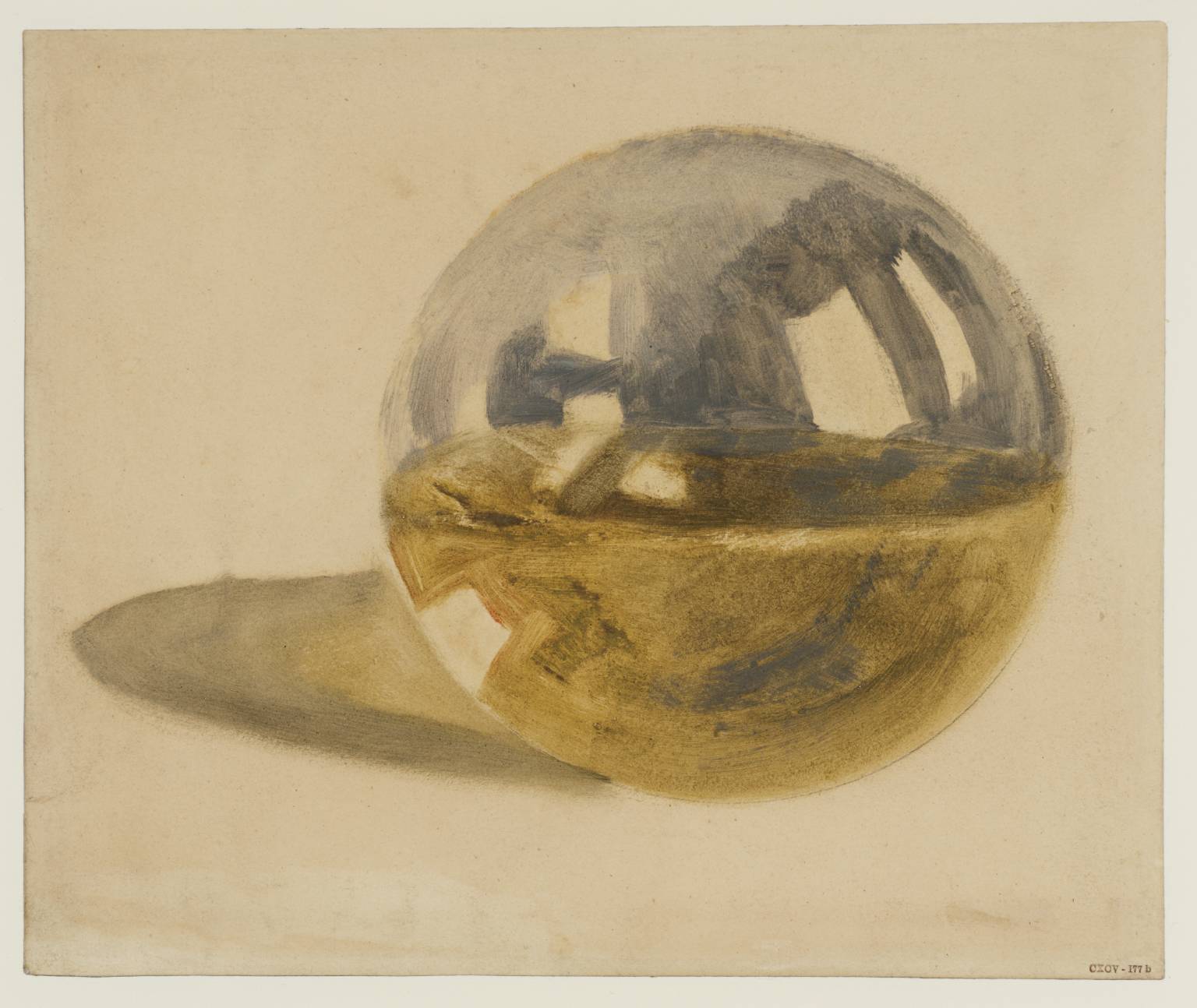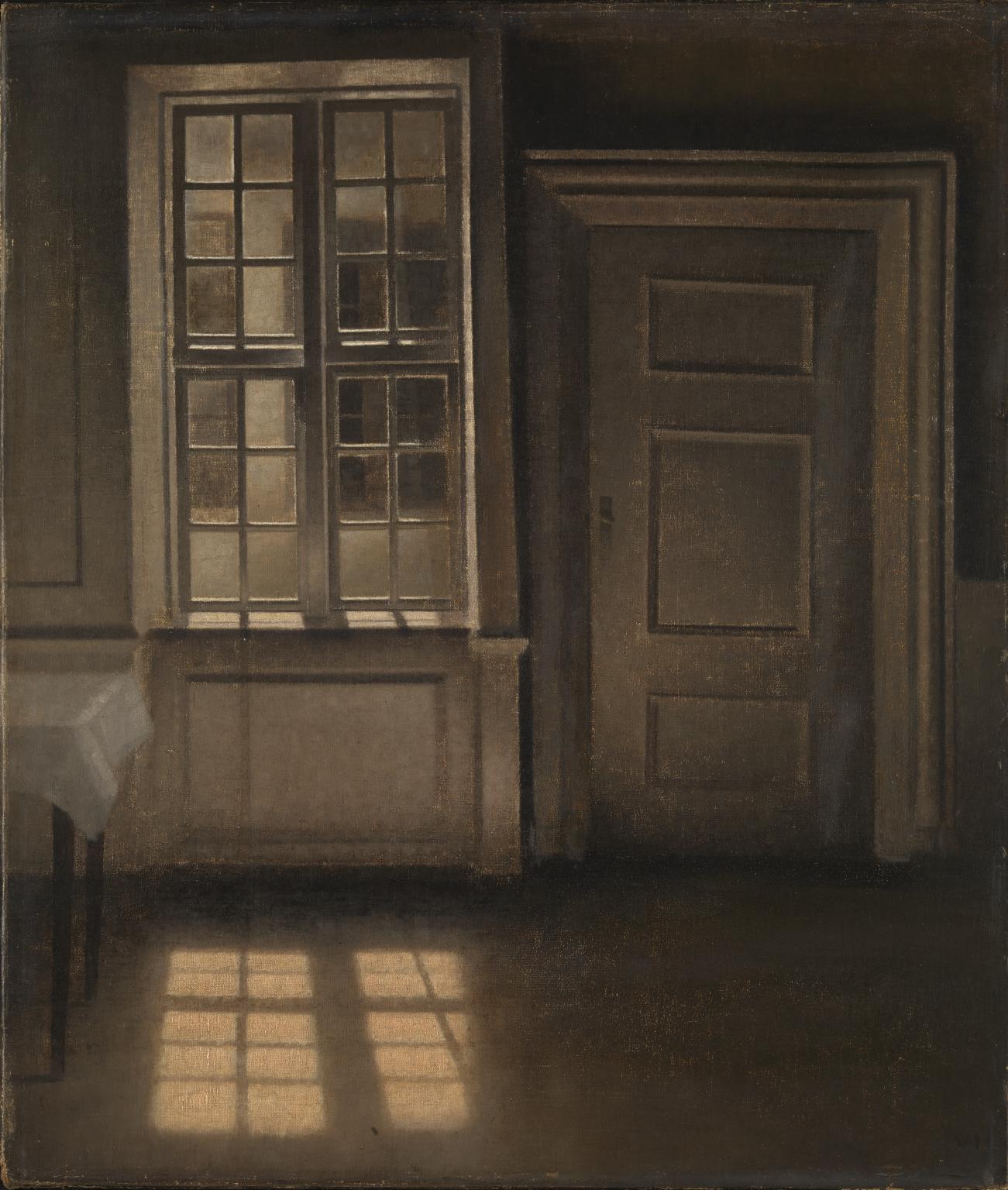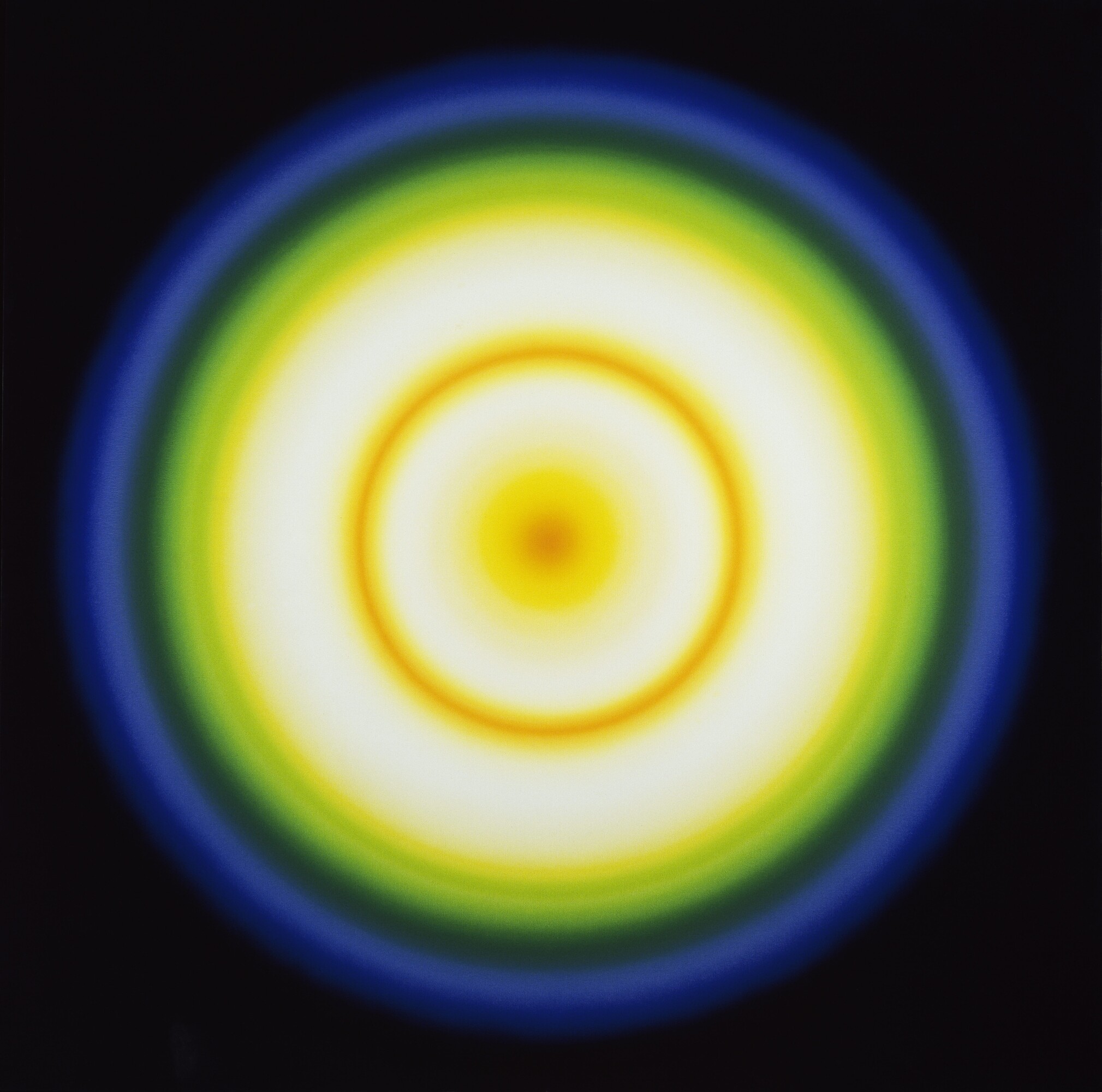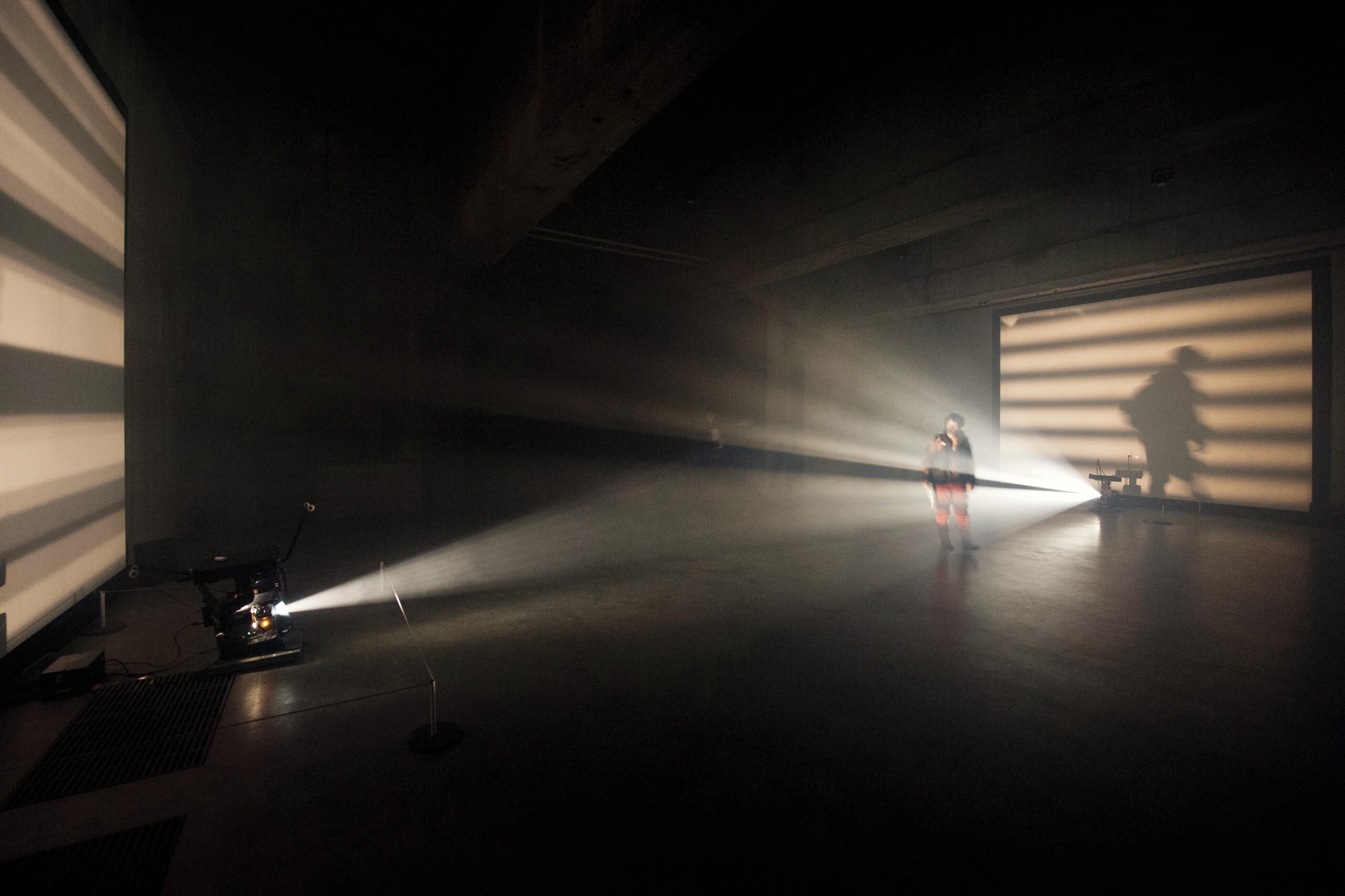Light: Works from Tate's Collection
Luke Smythe
As that which makes visible the visible, light is the ur-medium of art. How then to mount an exhibition that takes this ur-medium as its subject, when almost any work could be included on the grounds that light is needed to reveal it? Kerryn Greenberg and Matthew Watts, the UK-based curators of Light: Works from Tate’s Collection, have responded to this challenge persuasively by focusing on two preoccupations which have endured and evolved in Western art since the late eighteenth century. Across a group of seventy works, divided into nine thematic sections, they track changes in light’s standing as an object of artistic scrutiny and shifts in the way it has been harnessed as creative material.
On descending to view the show in ACMI’s basement, it becomes clear that the lighting technicians were not to be outdone by the artworks. Dimness shrouds the galleries, which are linked by illuminated archways. Paintings and works on paper have been dramatically spotlit. Electrical works are beacons in the gloom. These luminal theatrics enhance the exhibition’s conceit, but they do invite confusion on occasion. At one point, I tried to slip behind a curtain to view a glowing work that lay beyond. To my surprise, it was no work at all, but rather a lamp beside the exit, at which I had arrived prematurely by means of an inadvertent shortcut.
Like any institution, Tate’s collection has its strengths and limitations, which are reflected in the exhibition’s line-up. Its earliest and most comprehensive sections focus on British Romantic painting by the likes of familiar heavy-hitters like J. M.W. Turner, John Constable and John Martin. The latter’s Destruction of Pompeii and Herculaneum (1822) is an exhibition highlight. Worthy of a Stranger Things finale, it anchors a room devoted to the sublime. Tate’s holdings from the early nineteenth century run deep, allowing for strong selections from this period that convincingly convey light’s significance for several generations of artists. For Constable and Turner light served as both a sign of the divine and an object of scientific study. In the decades before Darwin, these now antithetical perspectives could still be reconciled by the conviction that science unveiled the truth of God’s creation. Turner’s scientific explorations are summed up by a series of absorbing studies, which track light’s play across the surfaces of glass and metal spheres. Tate have 25,000 Turners to select from, so it’s nice to see these modest works included alongside epic and well-known compositions like The Deluge (exh. 1805).

The Impressionist works that follow the Romantic selections reveal how light’s significance evolved throughout the course of the nineteenth century. As the Grand Manner subjects of Turner and his ilk gave way by stages to the painting of modern life, light also shed its cosmic connotations. Although still vaunted by Claude Monet and his contemporaries, it had shed its final vestiges of the spiritual and now merely disclosed the flow of urban life and the fugitive conditions of the landscape. There is no sign of the former in Tate’s line-up, but the latter have been lyrically recorded in river scenes by Monet, Alfred Sisley and Camille Pissarro.
Most collections struggle to do justice to the twentieth century, so it comes as no surprise that Light’s selections become more fitful in the wake of Impressionism. But despite the limitations imposed by Tate’s uneven holdings and the removal of a number of works that were included in prior legs of the show’s tour (first to Shanghai and then to Seoul), Watts and Greenberg have made some memorable choices. These notably include several bourgeois interiors, painted in the early 1900s by Vilhelm Hammershoi and William Rothenstein. The spaces these subdued works depict are as haunting as the one that is evoked by the recent work with which they have been paired: Philippe Parreno’s 6.00 PM (2000–6), a carpet whose design preserves the shadows cast by sunlight into an empty room. Parreno’s is one of several newer works that have been placed in the historical galleries with a view to forging transversal connections between artists from different eras. Not all of these departures from chronology succeed—I’m not sure, for example, why a mirrored box by Yayoi Kusama has been placed in the midst of the Impressionists—but broadly speaking they serve their purpose well.

In the wake of Parreno and company comes a room devoted loosely to the Bauhaus. The abstract photographs included here by László Moholy-Nagy and György Kepes, both of whom were Bauhaus professors, and the Italian artist Luigi Veronesi, who declined to become one, announce a seismic shift within the history that Light aims to recount. Not only are they the first works in the show to depict light as a “pure” phenomenon, freed from its relationship to objects, but they are also the first to use it as a creative agent in its own right. In view of this significance, I was expecting to see more photos in the show, and all the more surprised when none appeared. As the major light-based art form of the modern era, photography is integral to Light’s story. Yet it is paintings that dominate the exhibition’s checklist by a considerable margin.
Two further and final sections hurtle through the decades since the 1950s. The first, called ‘Light and Colour’, is devoted to abstract painting and has a rather unconvincing rationale. The three works it includes, by Wassily Kandinsky, Bridget Riley and Peter Sedgley, are united—according to the wall text—by the use of colour “to create impressions of light and movement”. Since colour is directed toward these ends by so many other works in the show, it is unclear why abstract paintings have been chosen to call attention to this phenomenon, especially when, in the pieces shown here, shape is as important as light is in conveying an impression of movement. In Riley’s Nataraja (1993), a design comprised of slanting parallelograms intensifies the work’s chromatic dynamism. In Sedgley’s Colour Cycle III (1970), which uses projected, coloured light to “animate” a static target form, concentric circles prime the eye to see dilation and contraction before the colour is switched on. This section is not entirely misguided, but it does lack a little finesse.

The clutch of films, illuminated sculptures and installations that span the past fifty years are uniformly excellent. A crystalline hanging work by Olafur Eliasson, a Dan Flavin monument, and a wall-dissolving room piece by James Turrell are given sufficient space to radiate without casting one another into shade. They also open up the show to three dimensions in a way that feels fitting, in light of visual culture’s immersive turn in the decades since the seventies. My pick from among this final ensemble is a work displayed alone on the ground floor. Lis Rhodes’ Light Music (1975) projects two films strips covered with arrangements of black stickers. The abstract patterns created by the stickers are cast across the room as shadows and projected simultaneously as sounds as they interrupt the light beams. The tones produced are disconcertingly abrupt and inexpressive. To me, though, they feel strangely reassuring by virtue of their inhuman perfection.

sound (stereo) and smoke machine, duration: 25min. © Lis Rhodes. Photo/ Tate.
Equally deserving of special mention is ACMI’s own contribution to the show, a specially-commissioned work by Mikala Dwyer called Weights of Light (2022). In an inversion of what prevails in the basement, Dwyer’s translucent plastic pods hang suspended in the sunny upper reaches of the ground floor atrium. Her description of these glinting, see-through nuggets as “shapes of nothing” gives some sense of how close they come to disappearing, despite the largest being several metres high. At once revealed and occluded by the sun, which streams in from above on a clear day, Dwyer’s is perhaps Light’s smartest work.
Quite why this exhibition ends without including a single digital work, and only one work by a non-Western artist (Yayoi Kusama), is something of a puzzle. Surely the digital era, with its proliferating screens and projections, is crucial to the story Light is telling. More works from beyond the North Atlantic could have opened up the show in new directions. The paths it does explore, however, are intriguing, and the works that feature are worth the price of admission. Thirty dollars may be steep by local standards, but it’s cheaper than an airfare to London!
Luke Smythe is a lecturer in art history and theory at Monash University.


